The DS convertible is considered one of the most elegant cars ever built. They have been sought by automotive connoisseurs for their gorgeous design and have been prominently featured with high society since the early 1960s.
When Citroën introduced the DS in 1955, the futuristic shape and flowing lines designed by Flaminio Bertoni had already been envisioned by him in convertible form but at the time was never considered as a production model by Citroën.

It was Henri Chapron that transformed the DS into one of the most acclaimed and sought-after convertible automotive designs of the 20th century.
In December 2020, we chatted with Noëlle-Eléonore Chapron-Paul the daughter of Henri Chapron who still maintains the records of the company. Along with being able to provide Certificates of Origin to owners of Citroën Henri Chapron cars, she has granted a few firms the rights to manufacture new versions of Henri Chapron’s classic designs.

First though, let’s review how Henri Chapron began transforming the DS.
Henri Chapron established his coachworks company in December 1919 creating bodies for the Ford Model Ts left by the American army in France at the end of World War One, at first service vehicles, then tourism ones.
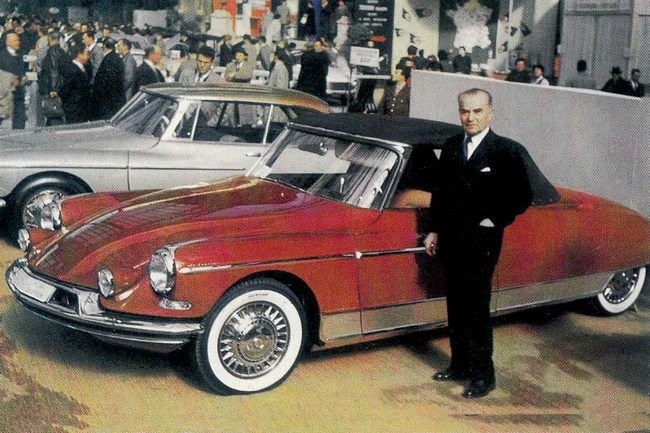
During the 1920s and the 30s, Henri Chapron coach-built numerous French and American cars such as Morris Léon Bollée, Hispano-Suiza, Bugatti, Delage, then, later, Delahaye, Talbot,… among French brand names, and Packard, Buick, Cadillac, Graham Paige… among American brand names. After the Second World War, he continued to work on Delahaye, Hotchkiss, Salmson. As more and more cars were built on assembly lines, quite a few coachworks firms had to close. Henri started to work with different manufacturers such as Renault, Peugeot, Simca,… and when the DS 19 was presented at the Paris Motor Show in October 1955, he was impressed by its design and imagined right-away a convertible version of the DS 19 model.
Henri Chapron designed and produced a cabriolet on Citroën DS 19 and ID 19 chassis which he presented at the October 1958 Paris Motor Show. After the show, Citroën, impressed by the convertible coupe Henri Chapron had built, asked him if he would agree to build for them a small series of cabriolets.
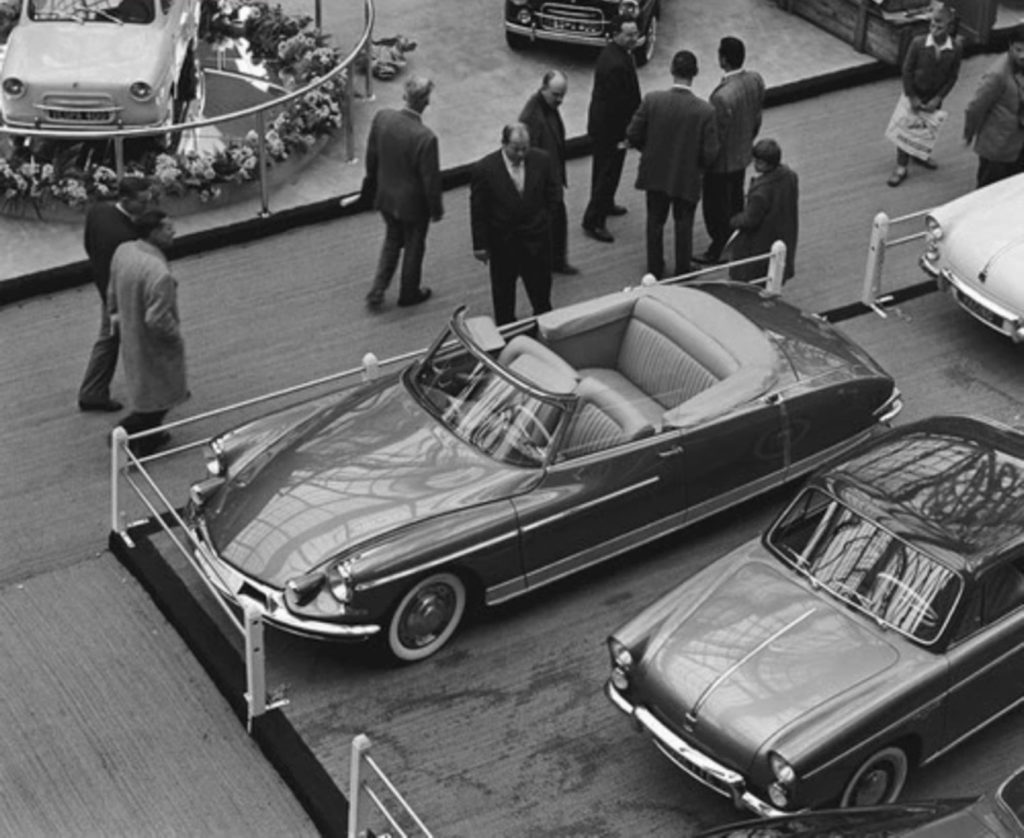
After 2 years of collaboration, they both agreed on a model called Henri Chapron “Cabriolet de Série” which had the design of the car presented in 1958 but was built with a few modifications such as additional reinforcements, lengthening the front doors and, together, stage by stage, they reviewed the construction of the cabriolet in order to minimize its cost.
Citroën sent the first DS 19 platforms to Henri Chapron in order for him to build the Cabriolet de Série at the end of 1960.
(A news item in the July 20, 1961 Daily Variety noted that Cary Grant had “telephoned Citroën to order a new car for use in the film “That Touch of Mink”. The factory reportedly shipped their display model convertible to the studio without hesitation and the car was prominently featured in the film, garnering key publicity for the model.)
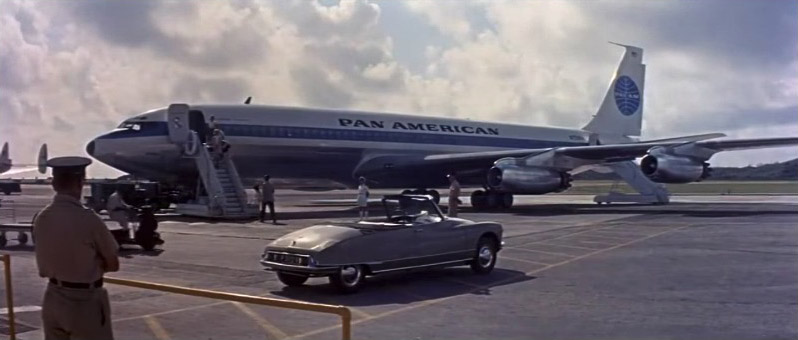

A little over 1,400 cabriolets were built by Henri Chapron on Citroën DS or ID base between the end of 1960 and 1974.
From 1960 on, a 4-seat Cabriolet by Henri Chapron, called “La Croisette” as well as a 2-seat Cabriolet called “Le Caddy”, built on the Citroën DS or ID base, could be ordered and purchased directly from Henri Chapron.
Henri Chapron continued to create variants based on the ID / DS 19, DS 21 and DS 23: Cabriolets called “Le Caddy” (2-seat) and “Le Palm Beach” (4-seat), coupés called “Le Paris”, “Le Concorde”, “Le Dandy” and “Le Léman”, and berlines (sedans) called “Le Majesty” and “La Lorraine”.
(An article about the various DS models that Chapron manufactured, can be found here: https://Citroenvie.com/Citroen-by-henri-chapron/)
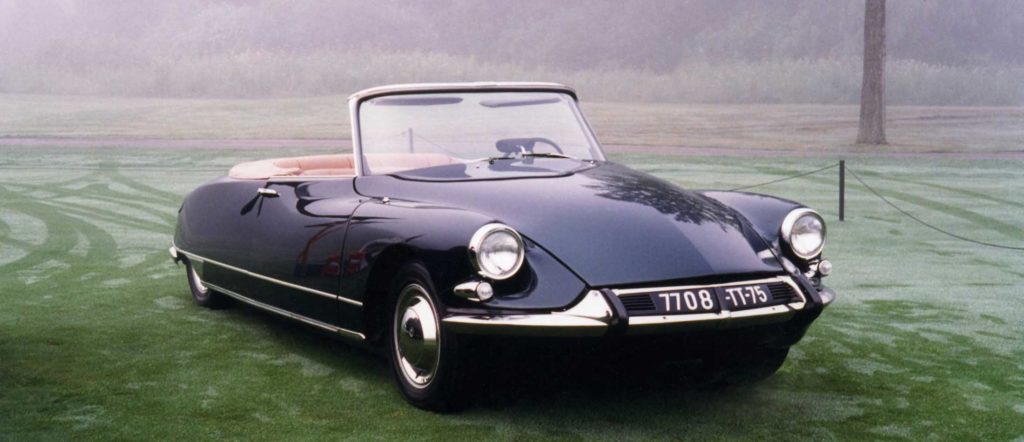
At the time, neither Citroën or Chapron envisioned that the DS, let alone convertible versions, would be sought after by people 70+ years later — wanting an indescribable driving experience. Therefore, acquiring one requires careful research and determination of use.
A DS / ID convertible (we’ll refer to them as cabriolets for the rest of this article) is not practical for use as an all-weather daily driver. The visibility restriction of the convertible top when raised, pretty much assures that.
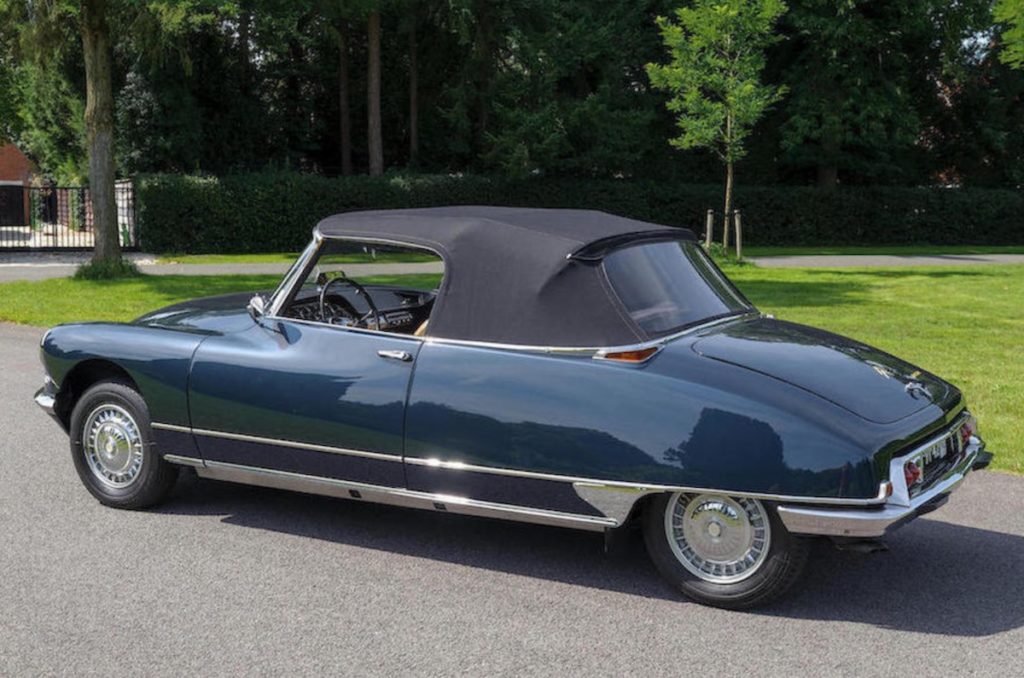
While many desire owning a DS Cabriolet with both of the following objectives in mind, reality likely means that one is going to be favoured over the other:
1) Originality and hopefully having an appreciating asset.
2) Driving in an occasional manner that you would with almost any other classic car.
Whether either of the above or both, there are many considerations as to what DS cabriolet is the best investment;
- Is it worth searching for a totally original well preserved original?
- Should one attempt the restoration of a languishing find?
- Would purchasing a reproduction DS cabriolet be a wise move?
If authenticity is paramount, know this: The right to build Henri Chapron’s cars, plates and logos is registered by the Chapron family. The models conceived and built by Henri Chapron are protected under the paternity and moral rights laws. His family, also, holds trademark rights relating to the mark “Henri Chapron”, which is registered as European Union trademark EU 018317727 and as French trademark FR 3198788 in the respective trademark registers.
The first thing to understand is that a DS cabriolet restoration is extremely complex. Although they have the front end of a regular D model, from the windshield back they are considerably different. Attempting to restore one without using an experienced Citroën cabriolet specialist pretty much assures you are going to have skyrocketing costs and most likely an end result that is not up to par.
Second, is that many original DS cabriolets may be fraught with problems, the conversion build technique of Chapron and lack of rustproofing, can result in many surprises as restoration progresses.

Third, and this has happened frequently with DS Cabrios; You may not be getting the car you think. Over the years many, DS cabriolets have been cobbled together from DS sedans, wagons, or put together from multiple donor cars.
Here are two examples:
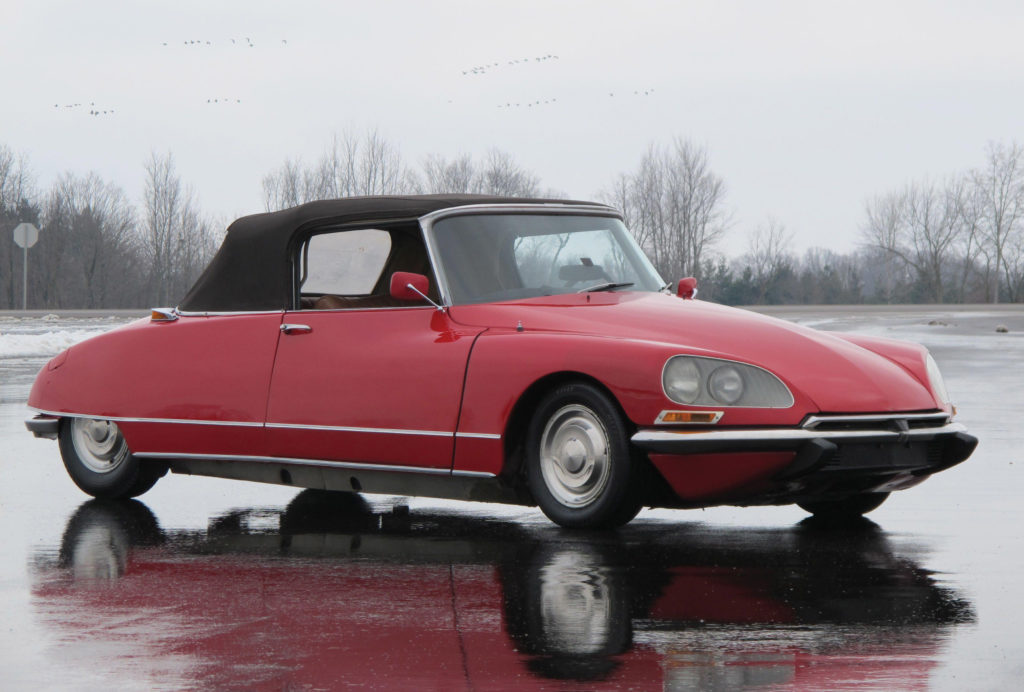
This DS19 cabriolet sold at the RM Fort Lauderdale Auction in Florida on March 6, 2011 for $82,500.00 US. It was “restored” at Raymond’s Citroën Service in Toronto in the early 1980s from 2 donor cabriolets.
The story goes like this: A customer who had an SM that required major work took his car to Raymond, but when he got the bill it was going to be quite a cash outlay! Rather than paying Raymond the money owed, he figured he would try to get his insurance to pay for the value of vehicle and one night he sneaked into the back lot of Raymond’s where his SM was parked and torched it! Although he tried to make it look like local vandalism by also painting slogans about the place, he was caught and prosecuted, but unfortunately other cars were affected including another customer’s SM.
Feeling bad about this incident, Raymond offered the customer another Citroën in place of his damaged SM and agreed to take three DS cabriolets he had lying in the lot that were not running (but somewhat better than parts cars) and make one restored DS cabriolet. (That was a very sweet deal for the SM owner given what used SMs were going for in the day and that DS cabriolets were beginning to be sought after.) It went through a few owners before eventually being offered for sale in the RM auction. Obviously, the front end is from a late post 1968 as is the dashboard. It was sold at the time to a buyer thinking he got a bargain, without any disclosure that the car was not authentic.
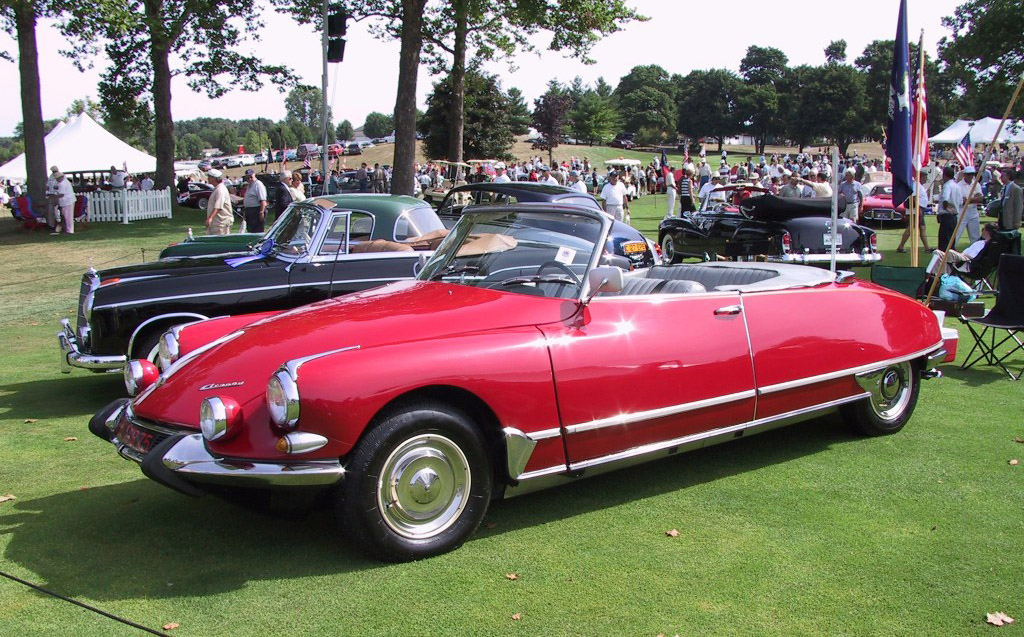
In the late 1990’s Philippe Devingt put together this DS cabriolet in Sarnia, Ontario. He found an authentic one in 2 rusty sections in New Jersey, trailered the hulks back home and worked on building the car in his garage for a couple of years.
When he commenced the project, he fitted a huge steel plate on the bottom and built the car up from that. He showed it, finished, at the 12th ICCCR in Amherst, MA in August 2002. And he displayed it — and surprisingly won a show award — at the Meadowbrook Concours d’Elegance near Detroit in 2002 (pictured above).
It was subsequently sold to a Citroën enthusiast in Toronto who had it for years before it got caught in a garage fire at his house. Amazingly, the car still ran, but the body was badly scorched and the interior and top totally destroyed.
The burnt remains were sold to a third party and then to a buyer as an authentic Chapron but without disclosure as to what lay underneath. It was then sent to Europe for restoration. Imagine the look of surprise when the car was put on the hoist in Europe thinking that the car was original and just needed bodywork and new interior!
Authenticity
Buying a true Chapron DS for investment requires that you thoroughly know how the Henri Chapron cars were built. Henri Chapron was known for stamping each car he manufactured with his work number in many places, some of the parts built by Citroën as well as the parts produced in the Levallois factory by his workers.
If you are buying with originality in mind, it helps to have it authenticated by Noëlle Chapron-Paul. In 2014, Noëlle had a limited series of 100 Henri Chapron authentication emblems made by the factory in France that produced the originals.
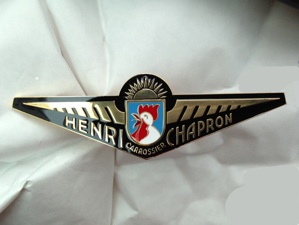
Noëlle offers these along with authentication certificates for cars that she is able to verify, matching them to the company’s records that she has in her possession. Henri Chapron stamped identification numbers at various locations. If a D Cabriolet was originally built by Henri Chapron, these markings must be present.
When buying an authentic Chapron you might want to verify its authenticity in order to ensure the value you are paying.
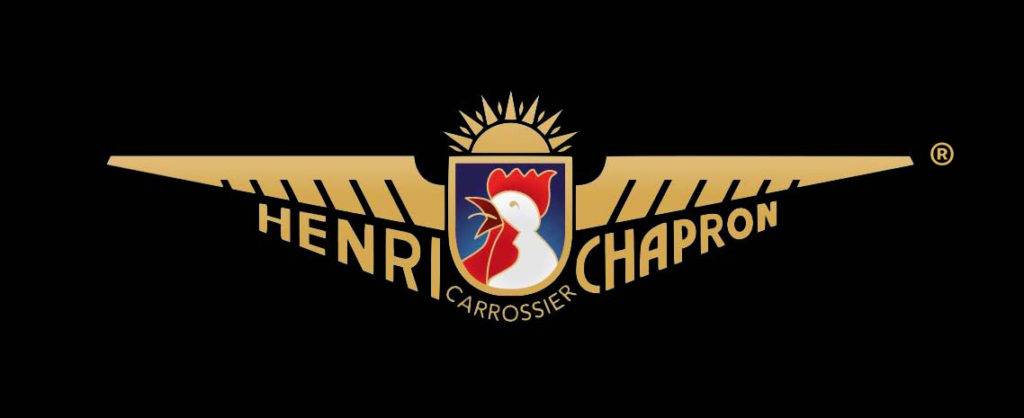
Vietnam and other places have made Chapron “knock-offs”. While some are obvious by the way the rear trunk area is formed, windshield height and roof attachment, or that they retain the standard (non-lengthened) berline’s front doors, others can be harder to discern from original unless scrutinized for Chapron markings and fully documented history.

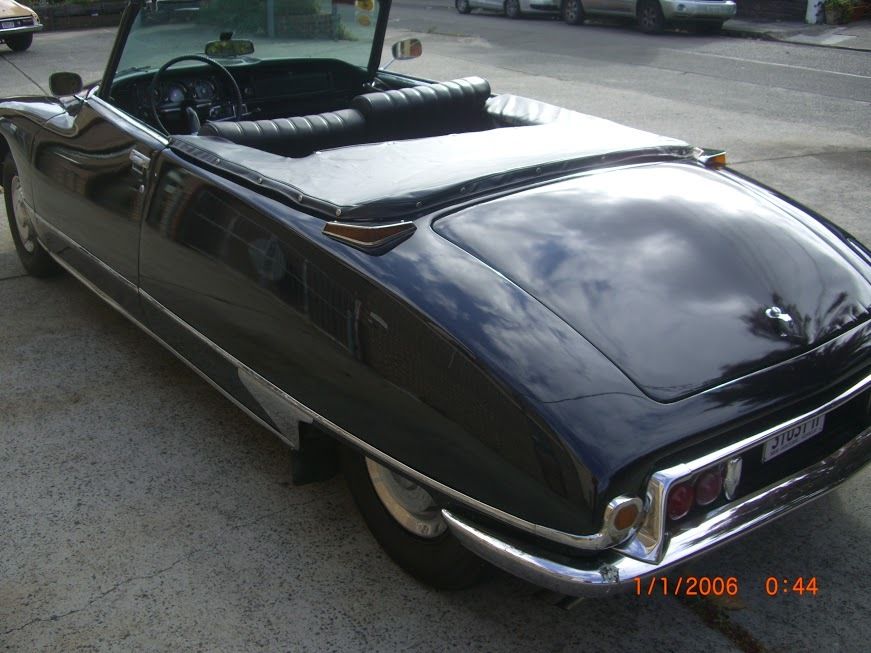
DS Club Ivanoff in France has been around for years doing DS convertibles that, according to Noëlle, are illegal Chapron reproductions.
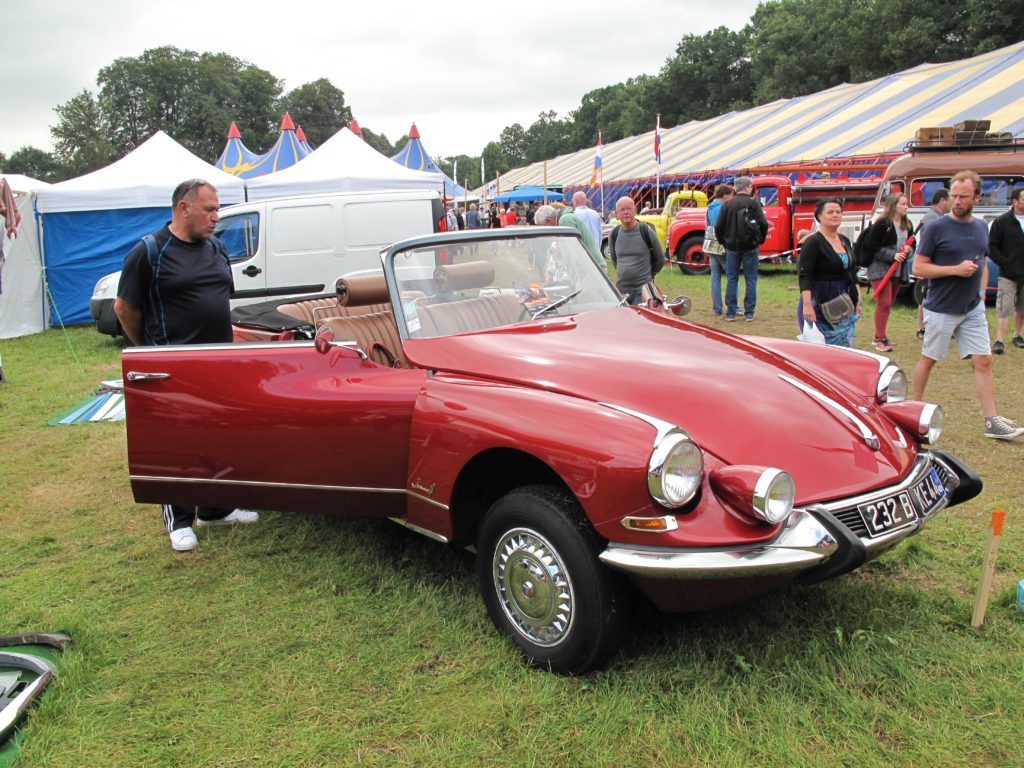
DS Club Ivanoff skirts official registration by referring to their DS convertible as an “Ivanoff” and do not mention Henri Chapron, even though they badge their cars in an uncannily similar manner.
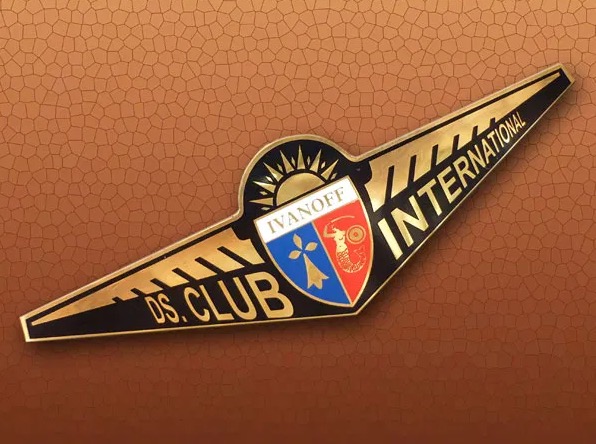
Though various D Cabriolet reproductions are not “original” and do not command the prices of Henri Chapron convertibles, they have a following among enthusiasts who want to drive them and not own a pristine original Cabrio that they are afraid of adding mileage to and have depreciate! But these days, such older reproductions have other considerations such as safety and long-term value in their own right.
Practicality
There are companies performing restorations on D Cabriolets that are taking measures in chassis strength, rust prevention, body, mechanical and paint enhancements well beyond what Citroën and Henri Chapron were able to achieve.
Citroen André, and Konijnendijk Klassieke Automobielen, both in the Netherlands, undertake D Cabriolet restorations to a very high standard.
https://citroen-andre.com/restorations/?lang=nl
https://www.citroen-konijnendijk.nl/
Citroën Heritage, under L’Aventure Peugeot Citroën DS, which oversees Le Conservatoire, Citroën’s museum of cars, announced a privileged partner relationship CQS Classics Group in December 2020, entrusting them with the restoration of certain projects for Citroën Heritage’s cars and those for French customers. They show a DS Cabriolet in the restoration section on their website: https://cqsclassics.com/en/restoration-service/portfolio-citroen/citroen-ds/
And recently, Chapron restorations have become very interesting; Noëlle Chapron-Paul has granted a German restoration company, Citroën-DS-Manufaktur, that has restored multiple D Cabriolets, the rights to reproduce them with Henri Chapron pedigree and supporting documentation, marketed as “Series 2”. What they are doing is nothing short of astounding!
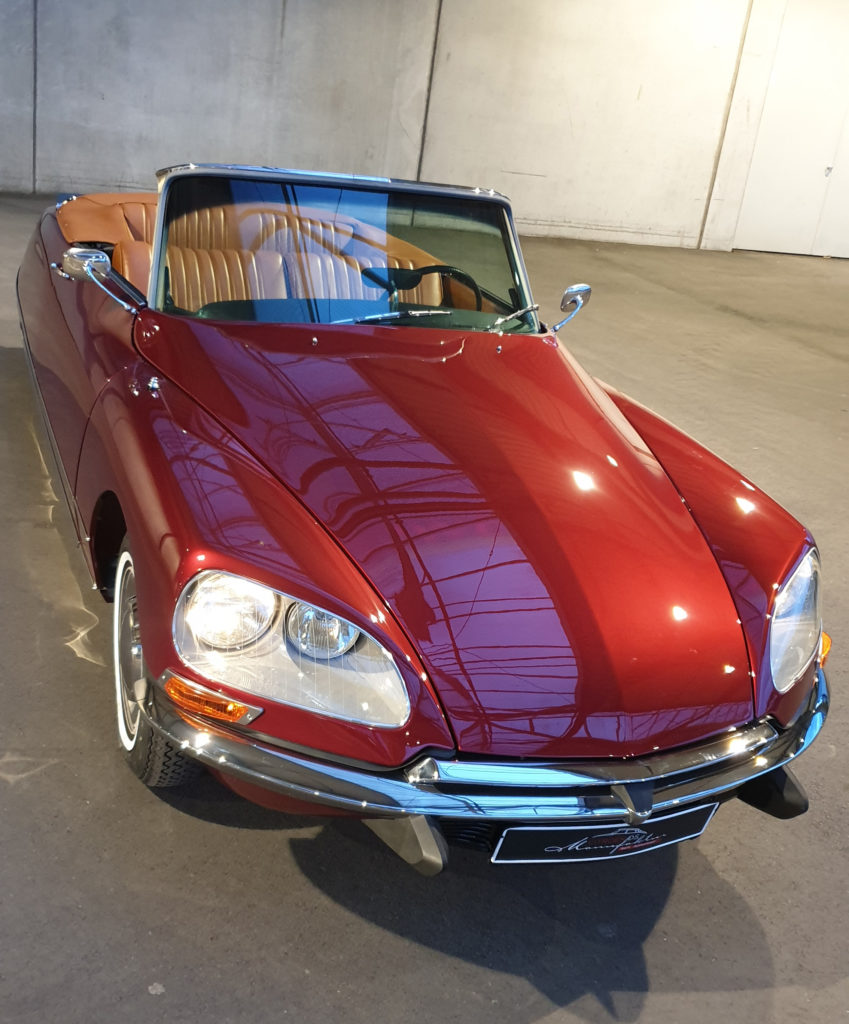
We spoke with Milan Dolinar, Director of Sales & Marketing at Citroën-DS-Manufaktur, who explained that the process they use for the Series 2 is what they have honed from the many restorations of both D Cabriolets and DS sedans that they have performed to date.
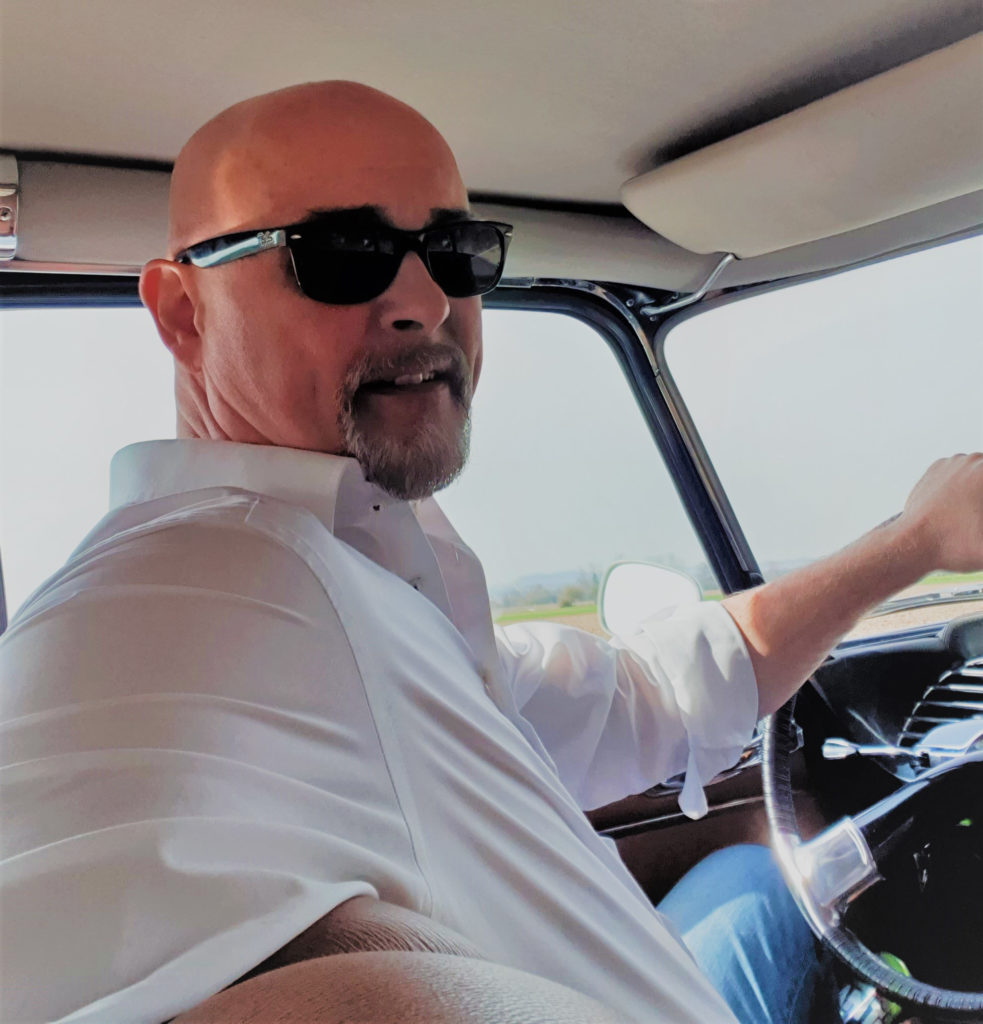
They have manufactured new and improved rear sections of cabriolets from the A pillar back; a 60% stronger chassis, better metal doors and rear body. The trunk lid is now carbon-fiber. (The original trunk lids were fibreglass.)
They use a custom-built factory jig to perfectly align all the new suspension and cabriolet body components.
While they are at it, they add wood guides in roof door frames, do more extensive structural supports and additional welding, adding noise cancelling insulation in the doors and chassis, applying rustproofing throughout, along with the latest in primer and a paint process that results in a 9-layer finish!
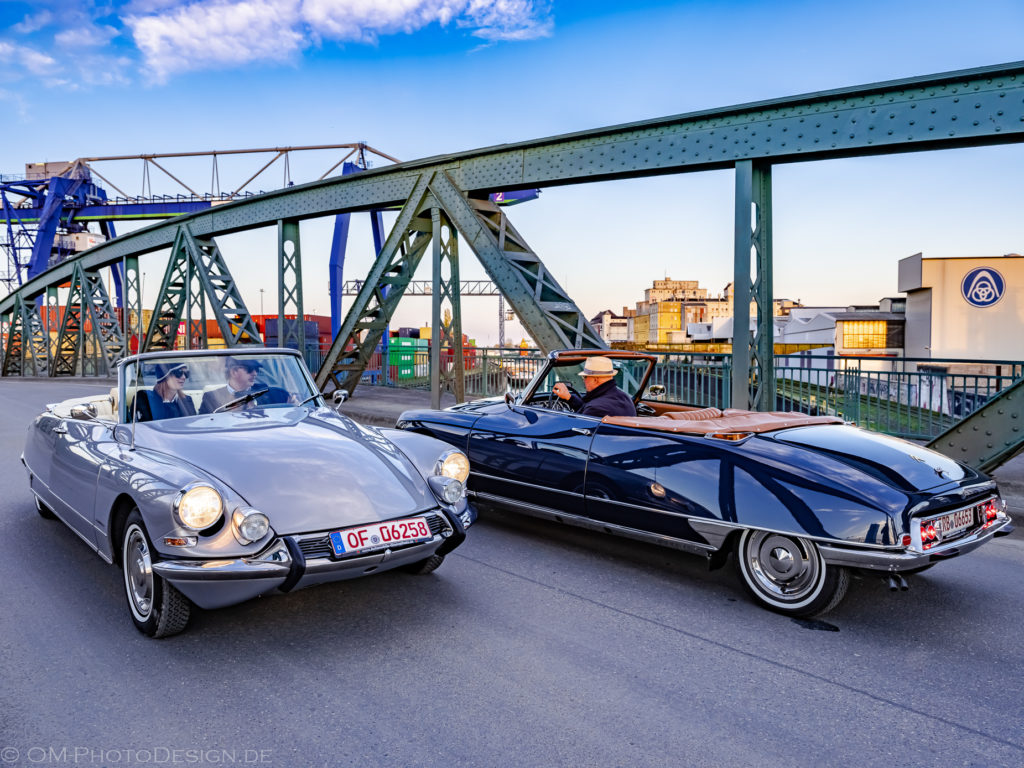
Roman Matheja is the owner of Karls-Autowerkstatt and Citroën-DS-Manufaktur. For 40 years he has been a coachbuilder, 25 of them restoring Citroën DS.

All work is done within the company at 3 locations where they do specific work such as:
- body and platform welding & paint
- engine/gearbox and mechanical
- assembly ‑ including interior fabrication and top manufacture.
In all — a total of 23 people are involved with 11 dedicated to Citroën.
It is possible for them to restore existing D cabriolets to this standard. So, if you have a car with original pedigree, it can be enhanced to modern standards respecting the originality of the car. (Every D cabriolet was the same as a berline from the front bumper to the A pillar. Citroën-DS-Manufaktur restores the front end, including the engine and all mechanicals, then constructs a new car from the A pillar to the rear.)
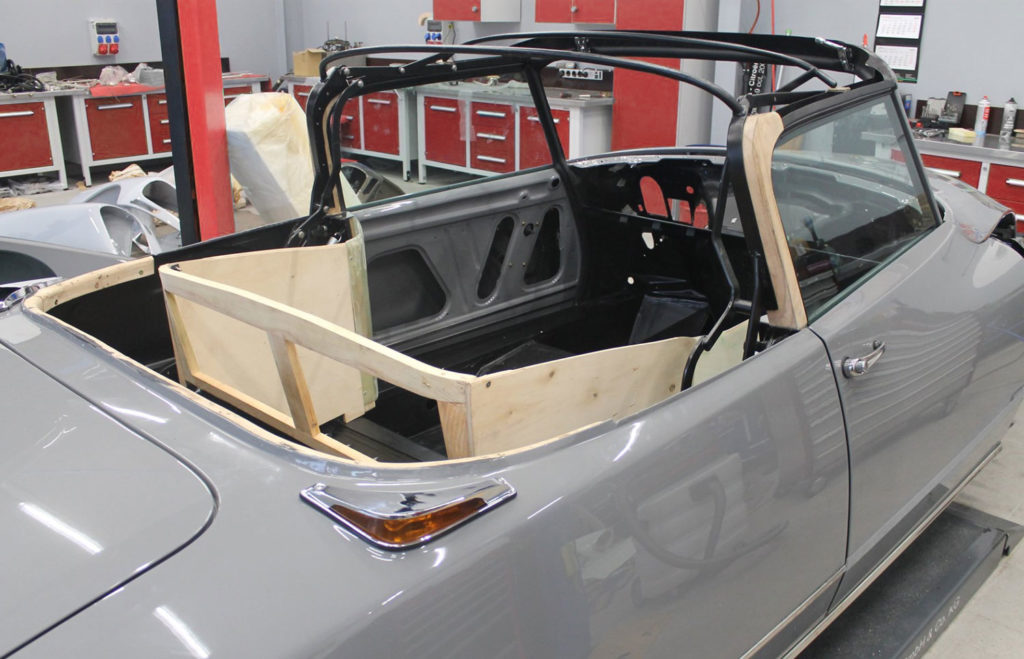


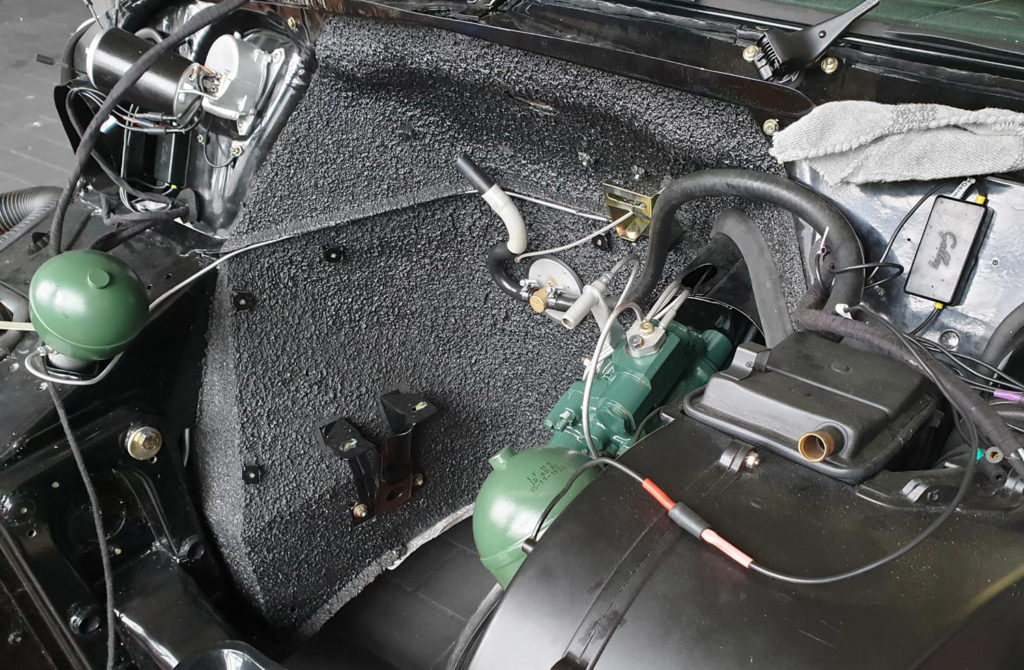

They have 70 DS parts cars in stock. Milan says that most people want a 1967 DS21. They can upgrade engines in any model to what the customer wishes.
They also restore Citroën D sedans and wagons with their chassis and body finish upgrades. In fact, on their homepage they show a spectacular white DS 21, with a red roof that was painted to conform a customers’ wish to match the colour of his new Lamborghini! Their dashboard treatment to give a polished wood-grain finish and full instrumentation is also quite an upscale transformation.
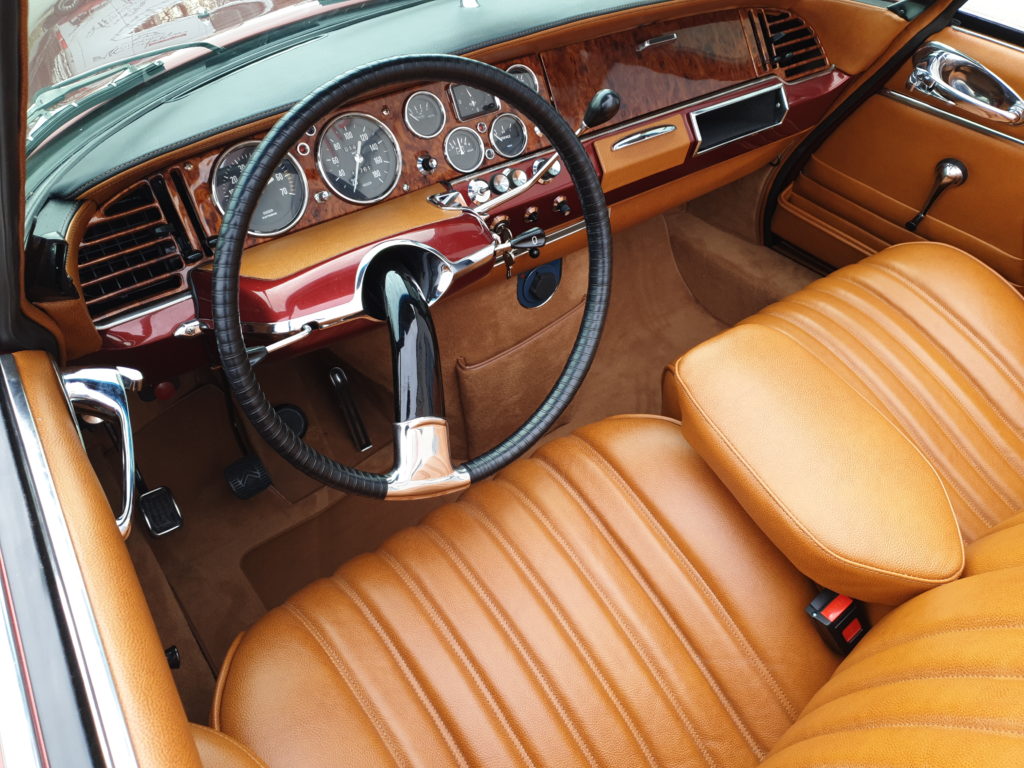
For those wishing to subject their D cabriolet to inclement weather, or extend their driving season in style, Citroën DS-Manufaktur offers a fibreglass hard-top that is light and easy to install.

As of December 2020, 2 cars were built under the Chapron license. The facility is now capable of turning out 2 cars per month (2 door cabriolets or 4 door berlines).
Plans for 2021 include 10 D cabriolets. They are not doing other Henri Chapron D model variations as it would not be cost-effective. Their goal has been toward achieving the means to systematically turn out D cabriolets and berlines.
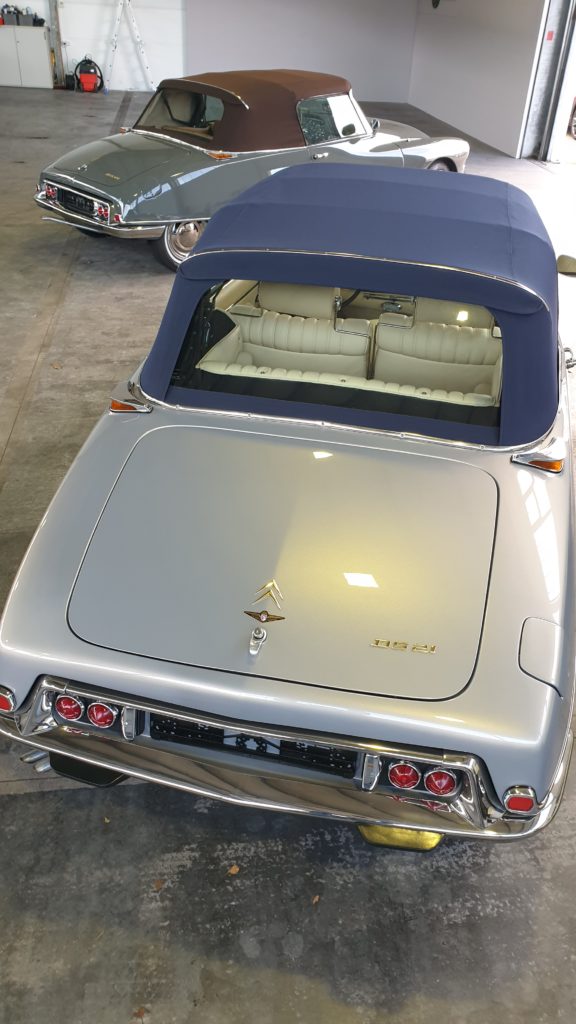
https://www.citroen-ds-manufaktur.com/index.php?lang=en

Citroën-DS-Manufaktur is also considering building a car between the berline and convertible. The 4-door “Decouvrable” was only officially built three times.


They claim their “Decouvrable Series 2” will be priced less than their DS Series 2 cabriolet and will be built with the collaboration of Noelle Chapron-Paul.
Citroën-DS-Manufaktur have toyed with building a DS coupe of their own design.
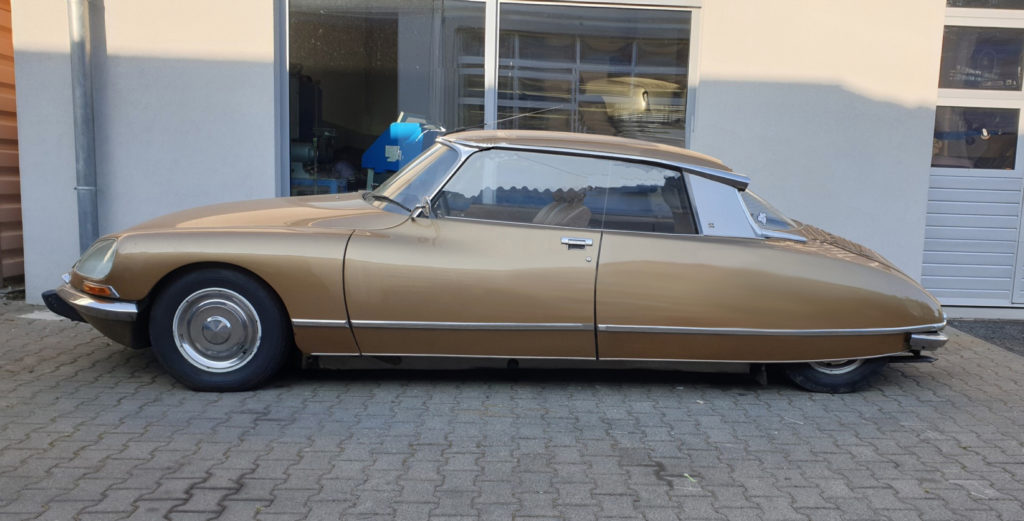
The lines look pleasing and it would offer an alternative to the equally lovely DS Grand Palais designed by Gérard Godfroy and Christophe Bihr that is going into limited production in France.
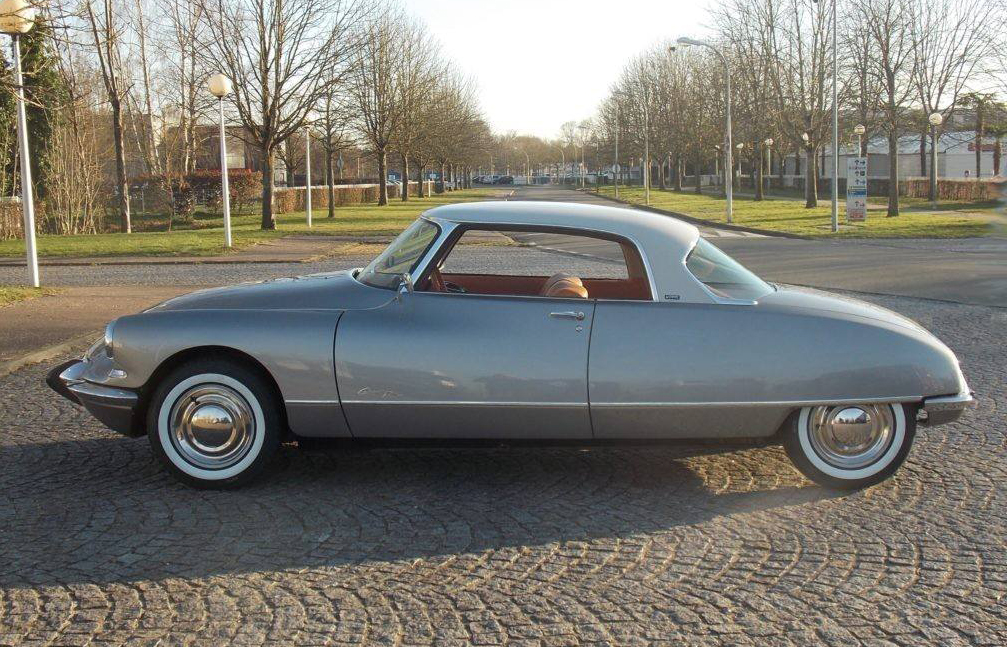
Affordability
When you consider overall cost, things get even more interesting. Looking at Citroën DS-Manufaktur for example, they will restore a DS berline in the 85K € range. A “Henri Chapron Serie 2” will be in the range of 130K € and up. (The most they have charged to date has been 165K €). Considering that what you get is a fully sorted, top-quality DS that is arguably better than new, it’s hard to argue that this isn’t the best route to go, unless you are a stickler for total originality.
Going with an original concours Henri Chapron D cabriolet will add about 100K € to the aforementioned prices. Does the premium for originality outweigh the benefits of a properly restored one? It’s a tough argument to make when the only factor for originality would be that the purchase value would hopefully still command a premium when you want to sell.

Conversely, buying a non-authentic copy can be risky proposition. If acquisition is driven by budget limitation, that choice may be hampered in the long run by a number of factors. Some have unwittingly paid a premium price for an illegal copy, while others, thinking they have found a bargain, have inherited issues that compromise its value. Visible differences that may be apparent aside, major detrimental problems in the long run, (including structural integrity and rust), can result in any initial savings being greatly diminished. As much as you may lust after a D Cabriolet, do careful research and seriously consider your options if you are considering any D Cabriolet that is offered for sale.
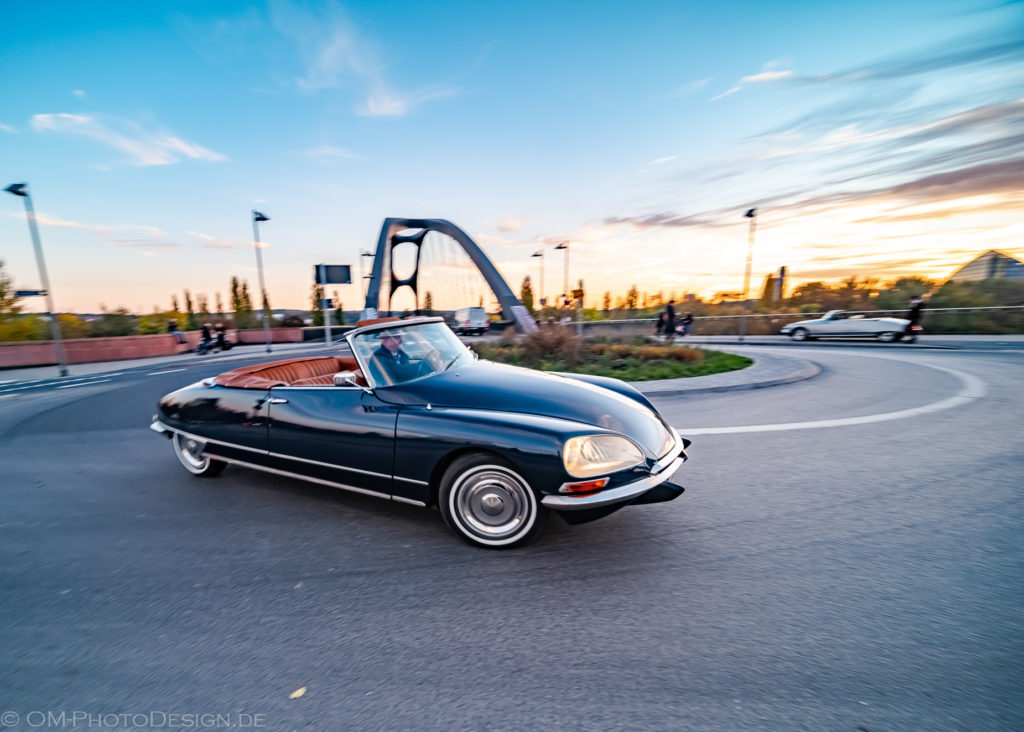
An Electric Future?
With the movement to electric vehicles and legislation that its threatening internal combustion vehicles being on the road, the DS appears to be a good candidate to convert to a classic electric means of mobility. In fact, it has been done by a few, including Citroën-DS-Manufaktur who did an electric D Break in collaboration with “Manufaktur Marton” in Switzerland who specialize in electrifying classic cars.
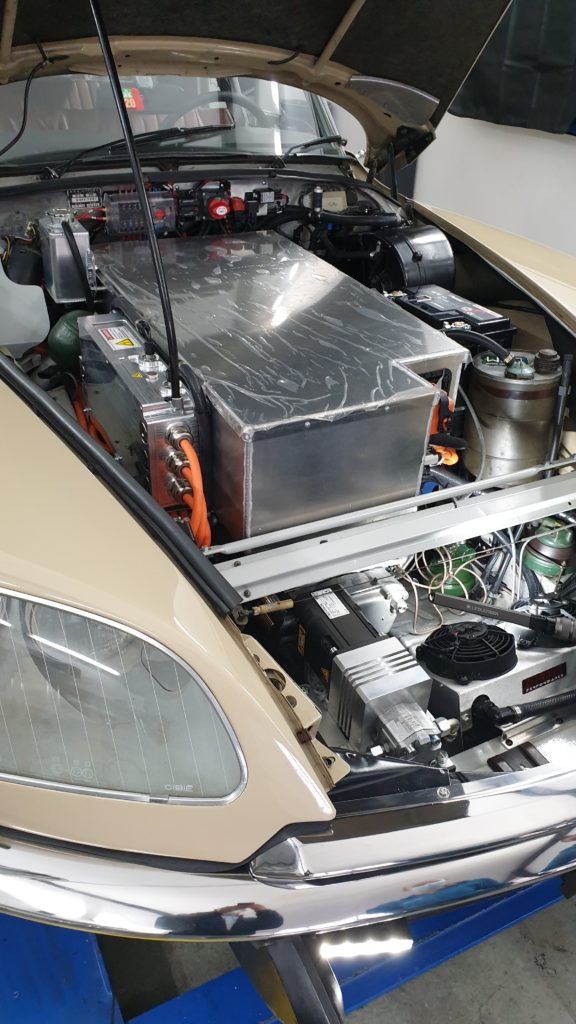

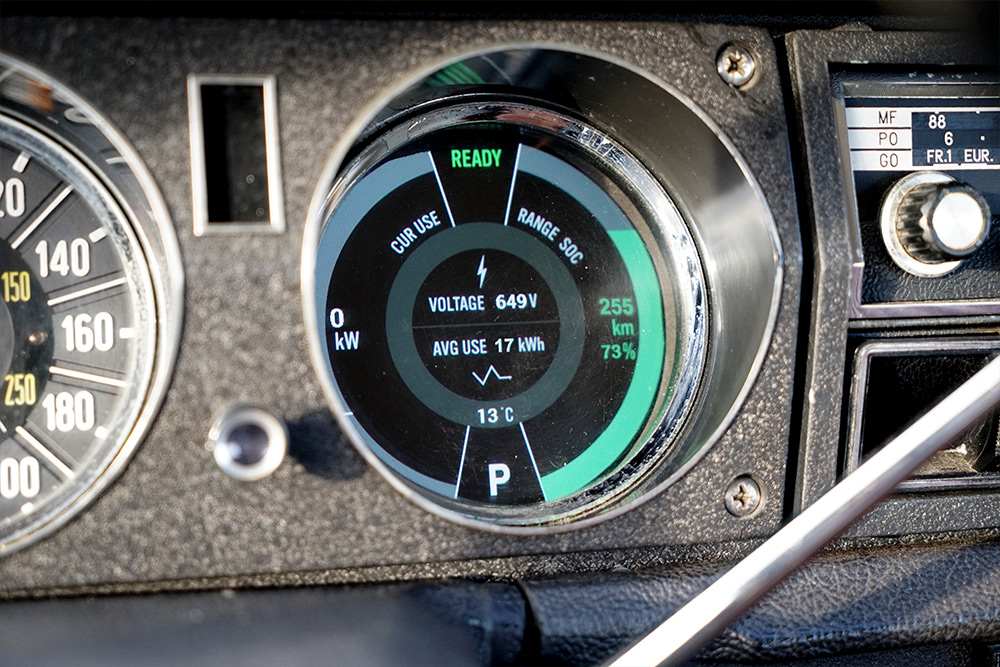
https://www.manufakturmarton.ch/citroen-ds23-break/
Milan has driven the electric D Break, but finds it rather odd. There is no engine sound at low speeds before wind noise takes over as you accelerate. He says it’s a rather divorced driving experience from the traditional engagement you feel when in a gas-powered DS. Though one plus he mentions is that in driving the mountains of Switzerland, the power is constant and plentiful at any altitude unlike a carbureted D where the air/fuel mixture needs adjustment.
Henri Chapron SM Variations
As the D Cabriolets are sought by collectors, so are the very rare Chapron versions of the SM;
SM Mylord
The Mylord is a two-door convertible version of the SM. The prototype of the Mylord was presented at the Paris Motor Show in October 1971.
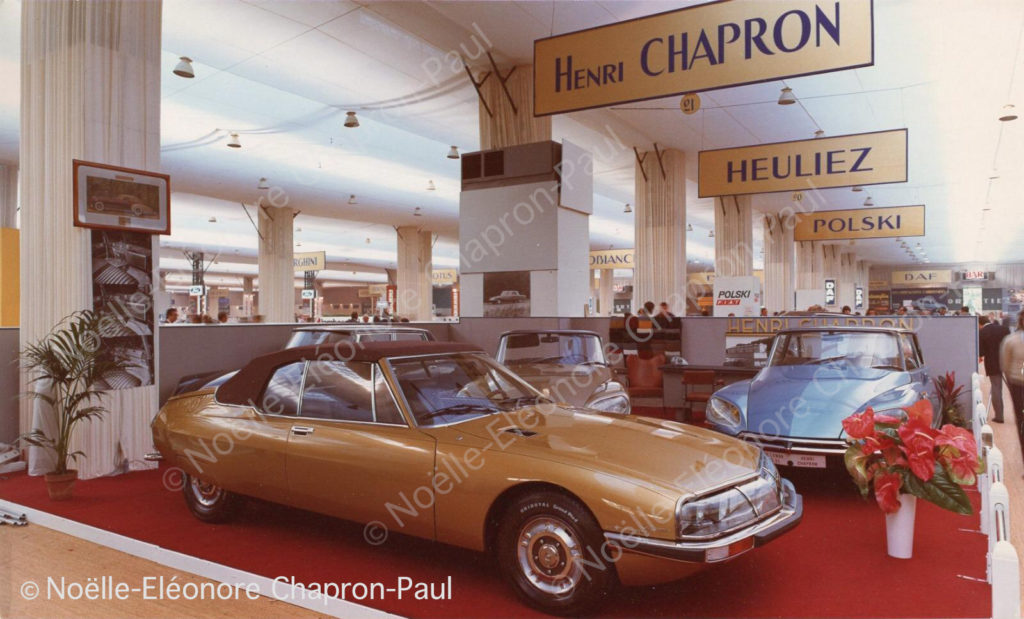
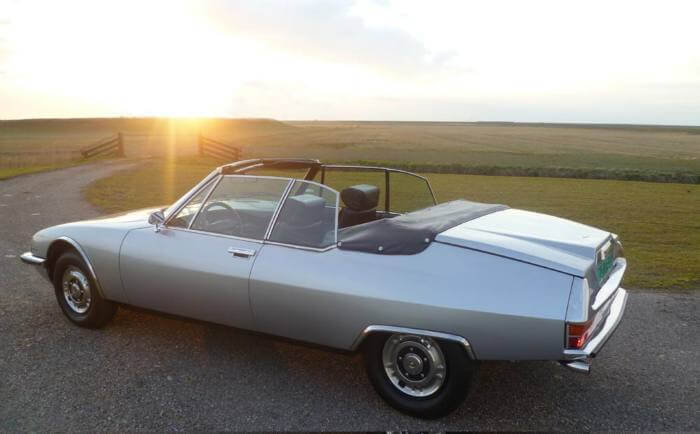
Production was even more complex than the D cabriolet. While the technology and the floor pan of the SM coupé remained essentially unchanged, the B and C pillars were removed, after which Chapron installed extensive reinforcements in the windshield, cowl and floor areas. Like the DS cabriolets, the modifications for each car had to be submitted to Citroën for approval. A full cover trunk lid was manufactured with the ridge of the rear license plate light being a raised detail that tapered toward the rear deck. Though the back hatch of the SM coupé was eliminated, the rear end of the car was consistent with the coupé.
The modified body was transported to Citroën, where the engine, chassis and other technical components were installed. Finally, the car was brought back to Chapron’s workshop to do the interior and paint it. This resulted in the SM Mylord selling at a price of 90,000 Ffr (before tax of 33%) at the time, double the price of an already expensive standard SM, which sold for about twice the price of a DS.
Overall, only 5 Mylord convertibles were produced by Henri Chapron and over the years a few more have appeared as non-authorized conversions from other companies.

In 2014, Noëlle Chapron-Paul authorized André Pol to build one Mylord called a Series 2. A 2nd Mylord is currently “in the works” with André Pol in the Netherlands.
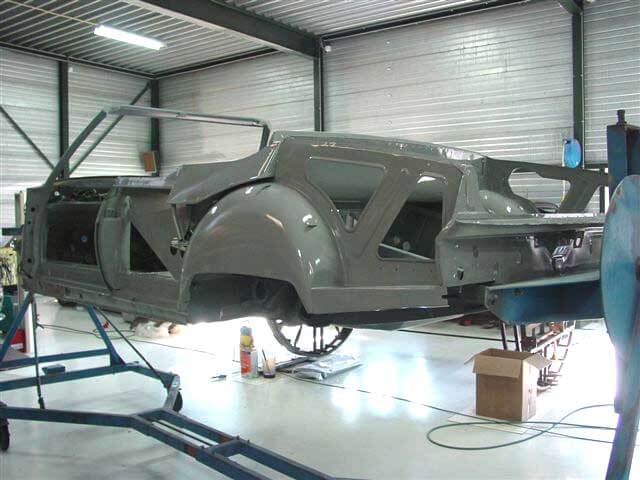
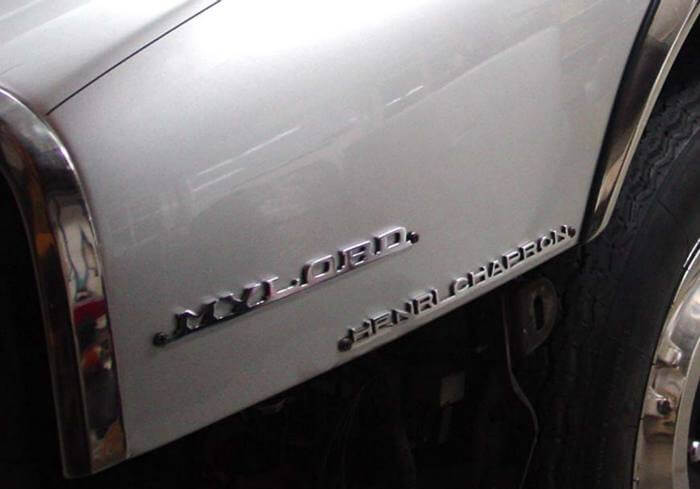
More photos of this Mylord restoration can be viewed here: https://citroen-andre.com/restoration-of-a-henri-chapron-sm-convertible-mylord-no-xxxx-2/?lang=nl
Noëlle is in discussion with a specialty shop in Los Angeles that has seen the Mylord blueprints she has and is considering building one under license. And Citroën-DS-Manufaktur is ready to build the Mylord. The price is set to be 235,000 € with a production time of 12-14 months.
SM Opera
One year after the Mylord Cabriolet, Chapron developed a 4-door sedan version SM called Opera. It was presented to the public at the 1972 Paris Motor Show and in the following two years, Chapron manufactured a total of seven Opera sedans. Each sold for 83,000 Ffr (before tax).
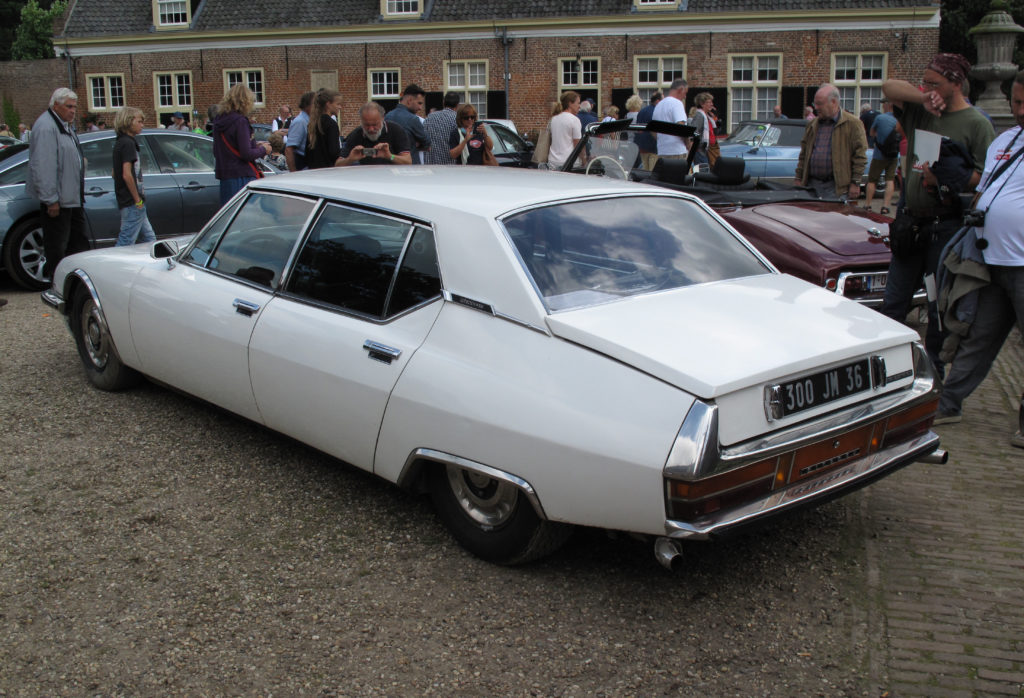
While remaining true to the design of the original SM coupé, the Opera’s wheelbase was an extended version (by almost 30 cm) of the SM coupé. Keeping the front doors, the rear doors were an in-house design by Chapron. They took up the lines of the coupé and also had the characteristic kink in front of the C-pillar. It was re-enforced in several locations. Chapron removed the rear hatch of the SM and replaced it with a full width trunk lid resulting in the rear corresponding to the design of the coupé.
There have been a few attempts at 4-door SM variations, but to our knowledge there is no-one offering reproductions of the Opera. Most likely the cost involved to produce one would be tough to justify for anyone but a wealthy SM enthusiast obsessed with a desire to create another.
SM Présidentielle
Two other SMs built by Henri Chapron, and arguably the most notable, are the SM Présidentielle convertible limousines commissioned by the French government. Both were lengthened even more than the 4 door SM Opera and are full convertibles. The front seats were moved outwards, and the steering column 2” to the left, to allow for an interpreter’s seat facing the passengers in the rear.
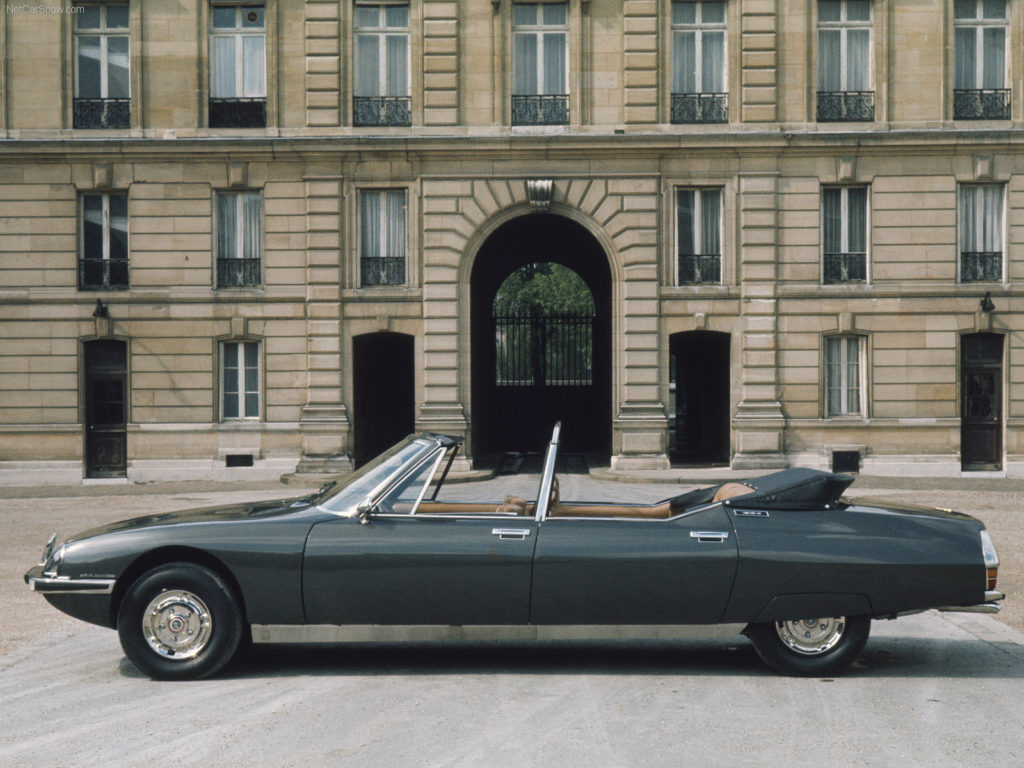
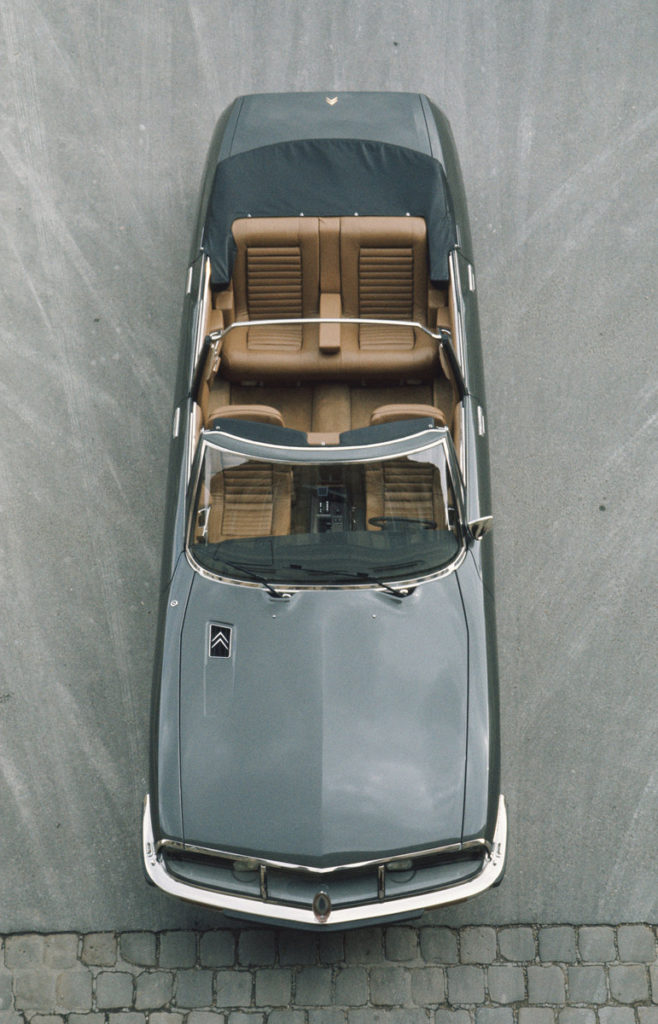
The cars bear the official government license plates 2 PR 75 and 3 PR 75 (1 PR 75 was the massive DS limousine produced in 1968 by Henri Chapron, commissioned by the French government for president Charles De Gaulle).
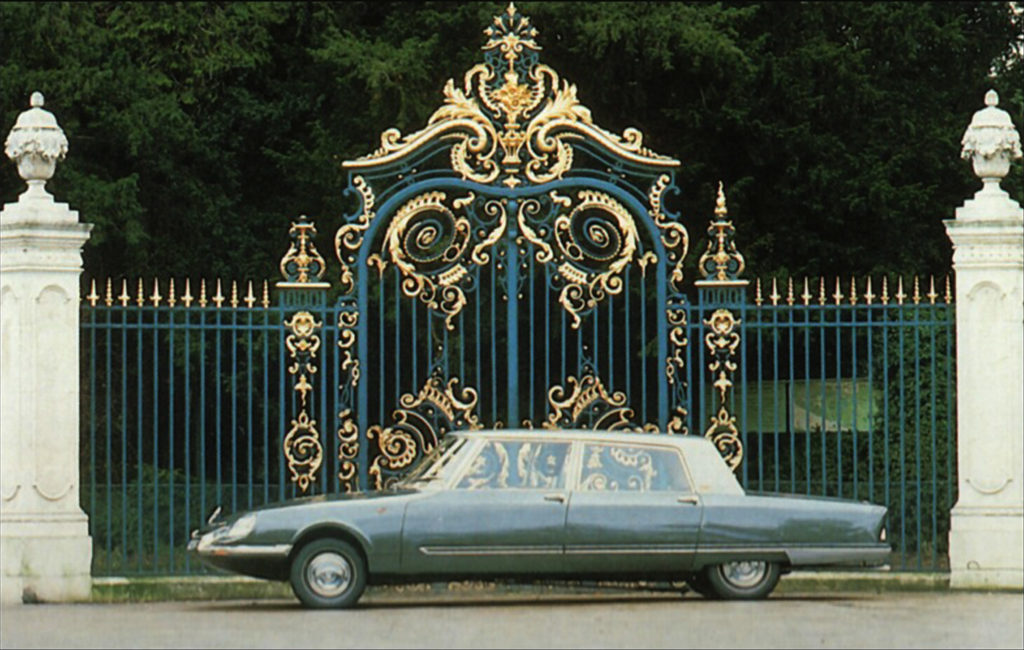
The first official outing of the SM State convertibles was during the visit to France of Her Majesty’ Queen Elizabeth II, on May 15, 1972.
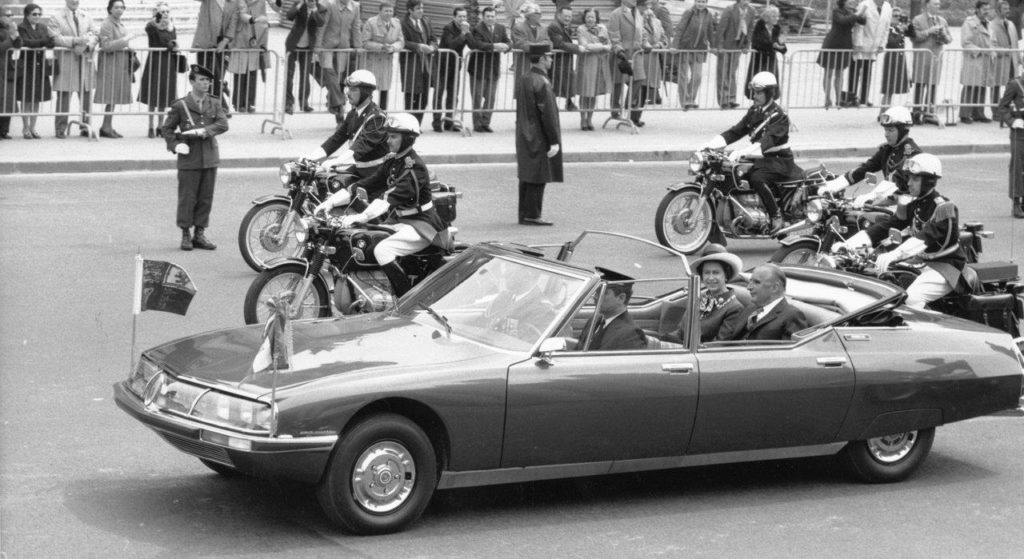
We mention them because a third SM model Présidentielle was created as a reproduction in 2008 using an SM coupé purchased in Normandy. Its transformation was entrusted to Crescia in Neufchâtel, Switzerland. (http://www.crescia-sa.ch/index.php)
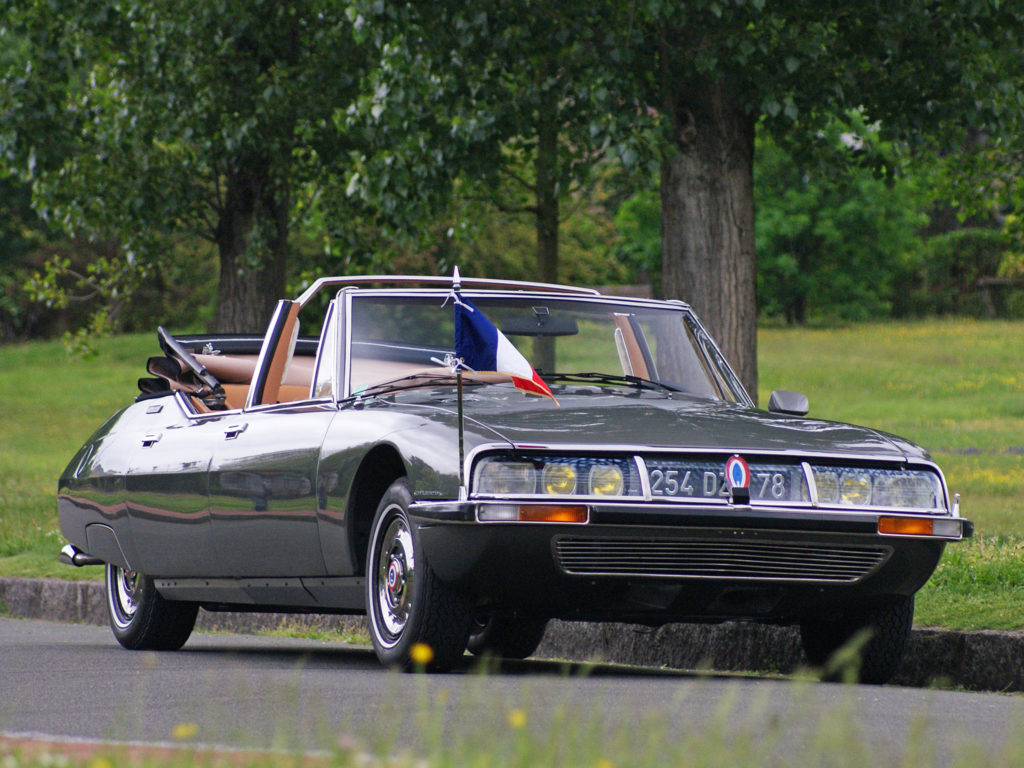
The engine and all the mechanical systems of the base car were taken to pieces and completely overhauled.
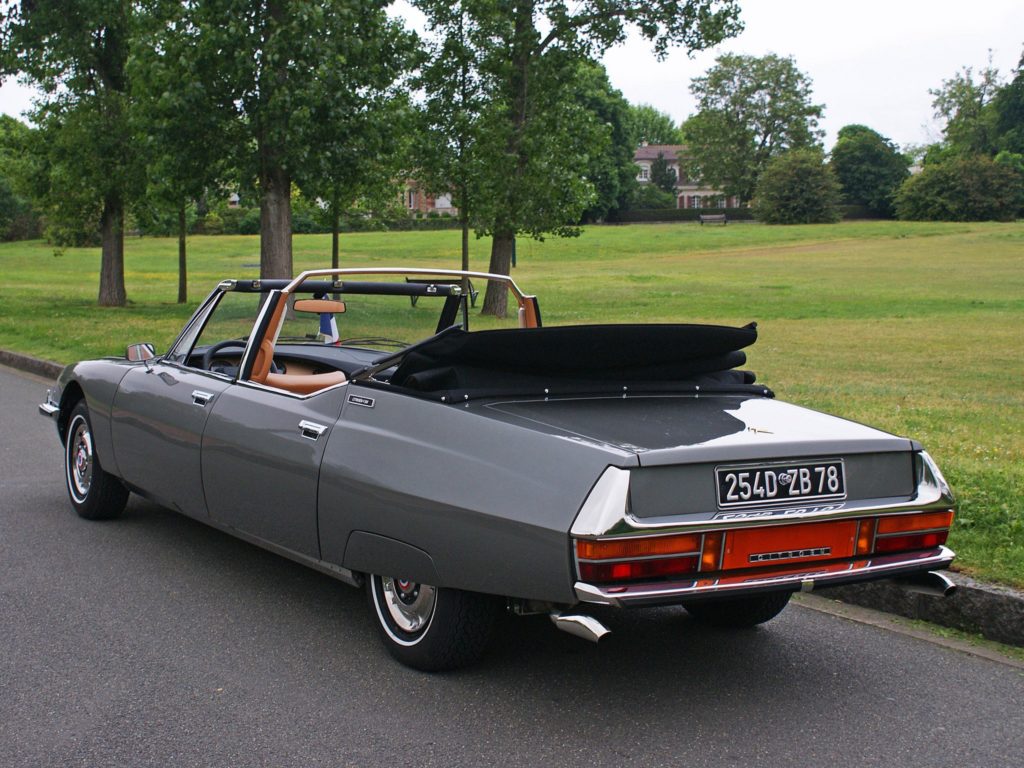
The result is visually impressive, but the construction process was reportedly a nightmare. Overall, including the purchase price of the original car, the total cost when it was finished in 2008 came to more than 500,000 swiss francs. Yet, it sold for just 178,500 € at auction in February 2010 at Retromobile in Paris.
The Henri Chapron firm closed at the end of December 1985 but respect and demand for his creations, particularly the DS convertible, remain strong.
Henri Chapron’s family, who to this day owns the name and the models, decided, in honor of Henri, to continue the Henri Chapron legacy, entrusting a few coachbuilders with the right to reproduce the model of their choice, under their close supervision and approval. So far, just one German business, Citroën-DS-Manufaktur, has been chosen to represent Henri Chapron to rebuild the Cabriolet de Série introducing the Henri Chapron Citroën Cabriolet Series 2 on DS or ID chassis according to Chapron standards. Nowadays, very few businesses have been restoring DS convertibles and coupes to a level that Chapron would have respected.

Motoring in a DS cabriolet today is still an incredible experience, and in the context of other highly sought-after classic cars, while not cheap, is still comparatively affordable and readily available.

For more information and authentication of Henri Chapron automobiles contact:
Chapron International
836 Anacapa Street, Suite #22853
Santa Barbara, CA,
USA 93121-2853
ncp@henrichapron.com
+33 6 62 60 15 00
+1 805 455 2193


Excellent article with exceptional photos on the original and contemporary production of Chapron conversions.
A must read for both admirers and purchasers of this beautiful ‘rolling sculptures.’
A great read, very informative
A very well presented & educational article, which left 2 issues out.
* What length / type guarantee comes with Cabrio DS manufactured at DS Manufaktur?
* Who supplies DS Manufaktur with all mechanical & hydraulic parts, installed inside the cabrios?
All those parts have been refurbished, and my feeling is that DS Manufacture will NOT reveal the name of his supplier/s. Yet he may surprise us.
Thank you.
Hi Simon,
thanks for your valide question. In Europe we offer 2 years warrenty on our cars. For the US we can´t do that, as we can´t offer any maintance service. All hydraulic lines are new. We produce our own electronic wiring and metal parts (including the fenders, roof, Chrom lines, etc.) and all parts for our A/C. All screws are also new.
For the other parts, there is not “one” supplier. The quality in the market varies from part to part. We try to identify the best.
If we can get hold on good original parts, we buy and use them.
Kind regards
Milan